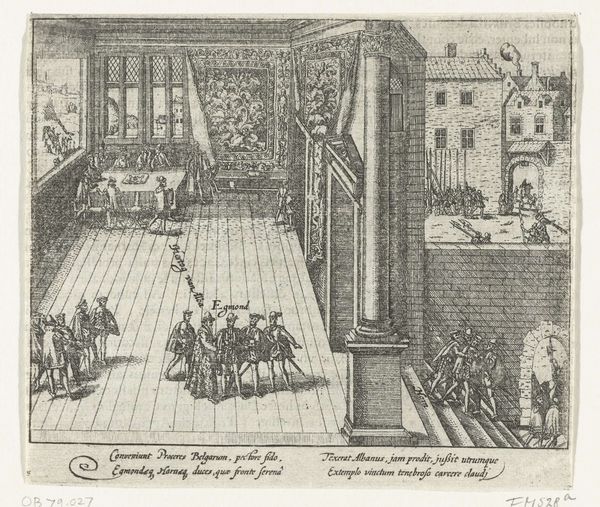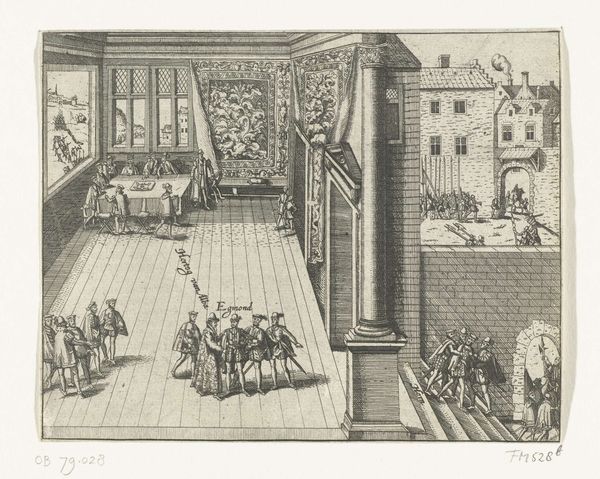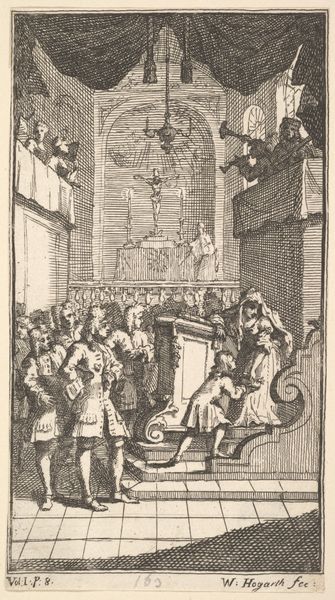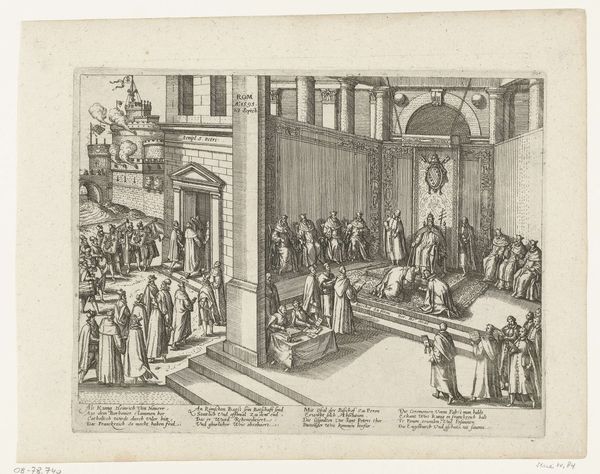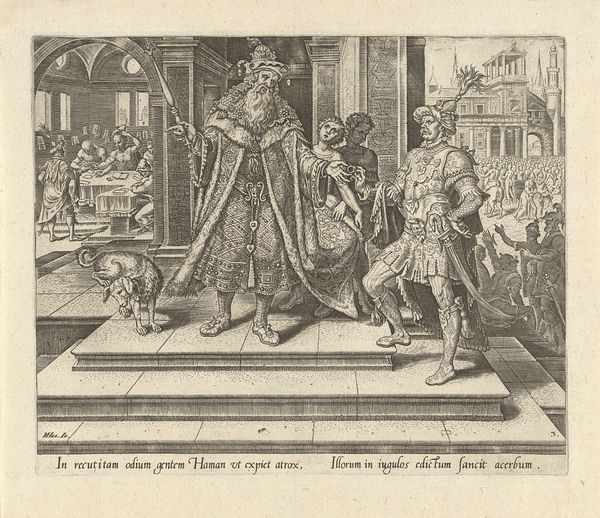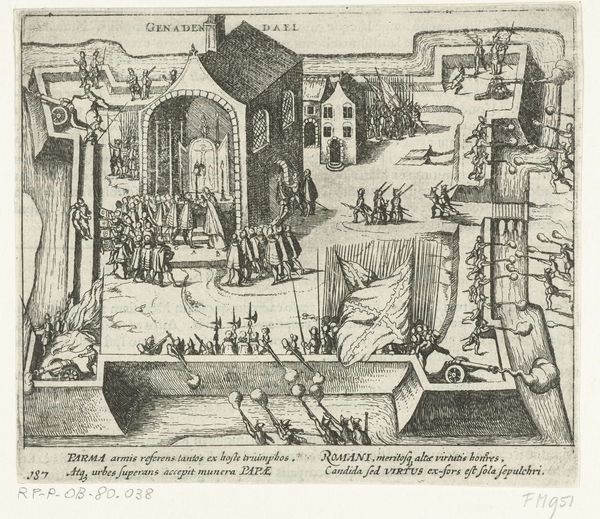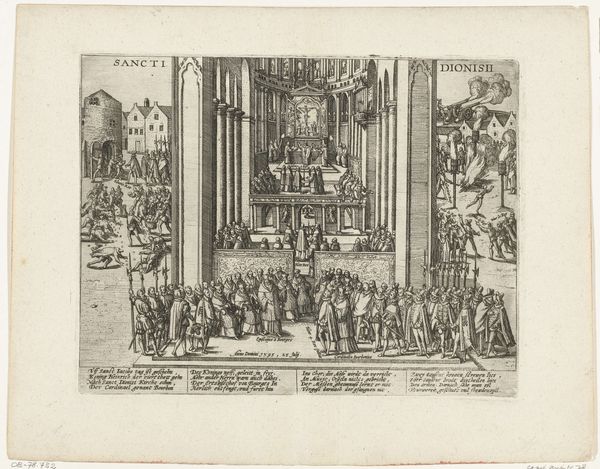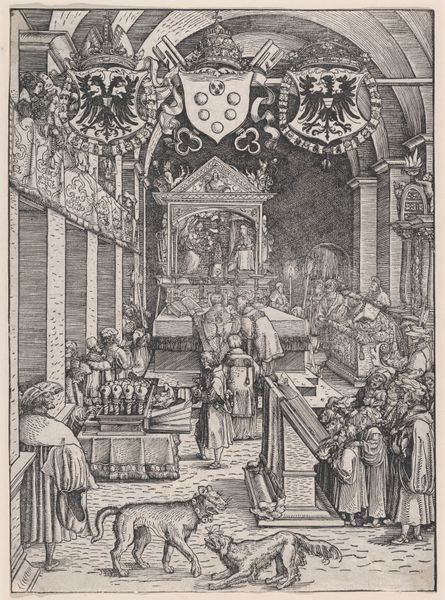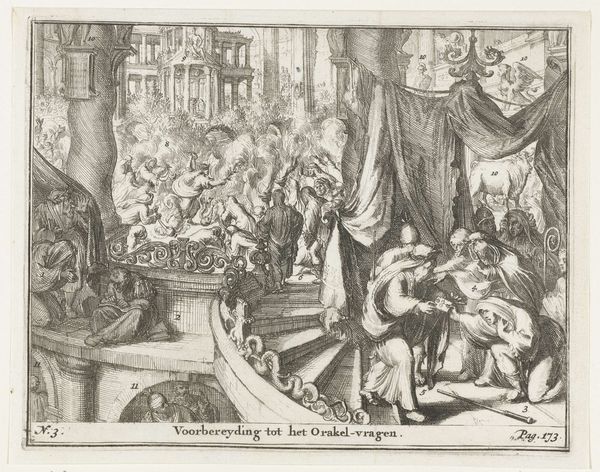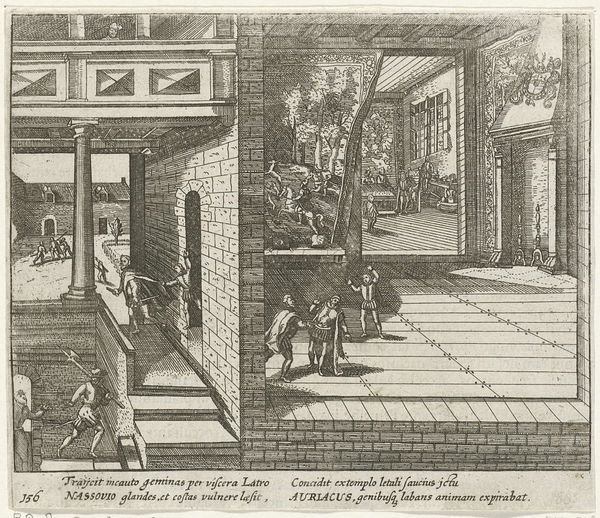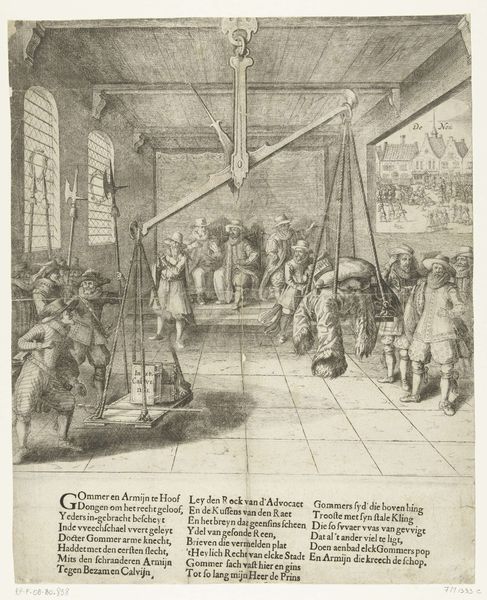
print, engraving
#
narrative-art
#
mechanical pen drawing
# print
#
pen illustration
#
pen sketch
#
figuration
#
personal sketchbook
#
linework heavy
#
sketchwork
#
pen-ink sketch
#
line
#
pen work
#
history-painting
#
storyboard and sketchbook work
#
northern-renaissance
#
engraving
#
realism
#
initial sketch
Dimensions: height 134 mm, width 160 mm
Copyright: Rijks Museum: Open Domain
Editor: Here we have "Beeldenstorm, 1566," a print made between 1613 and 1615 by an anonymous artist, currently residing in the Rijksmuseum. It's such a detailed engraving, almost overwhelming to look at. What draws your eye in this piece? Curator: My focus immediately goes to the depicted labor, doesn't it? Note the sheer industriousness involved in destruction. Each swing of a hammer, each climb up a ladder, each fallen fragment points to intense, physical effort. What was the social status of the people engaging in this labor? Editor: Good point. It seems like there’s a mix; some look like common workers, but others appear more formally dressed, perhaps even of higher social standing. Does this reflect something about the event itself? Curator: Precisely. This image reflects the social upheaval of iconoclasm. It suggests a widespread participation across different levels of society, a dismantling of the old order, not just ideologically, but also materially. Look at the broken pieces scattered about – what are they made of? Editor: Stone, wood...the shattered remains of religious iconography, if I had to guess. Curator: Exactly! Now consider the labor involved in creating those icons in the first place. This print isn’t just showing destruction, it’s implicitly highlighting a shift in labor from creation to destruction, and potentially to a new form of production. Who benefits from the change of artwork or no artwork inside the building? Editor: That's a powerful observation. So, it's less about the religious argument and more about how resources and effort are re-allocated in this changing society? Curator: Indeed. It asks us to consider not only *what* is being destroyed, but *how* it’s being destroyed, and who’s wielding the hammer. And importantly, to consider what new forms of material culture and social relations might emerge from the rubble. Editor: I hadn't considered the labor aspect so directly. I was too caught up in the religious implications, but focusing on the "how" and "who" provides a whole new layer of understanding. Curator: Exactly. Seeing art through the lens of its material production opens doors to deeper social understanding.
Comments
No comments
Be the first to comment and join the conversation on the ultimate creative platform.
